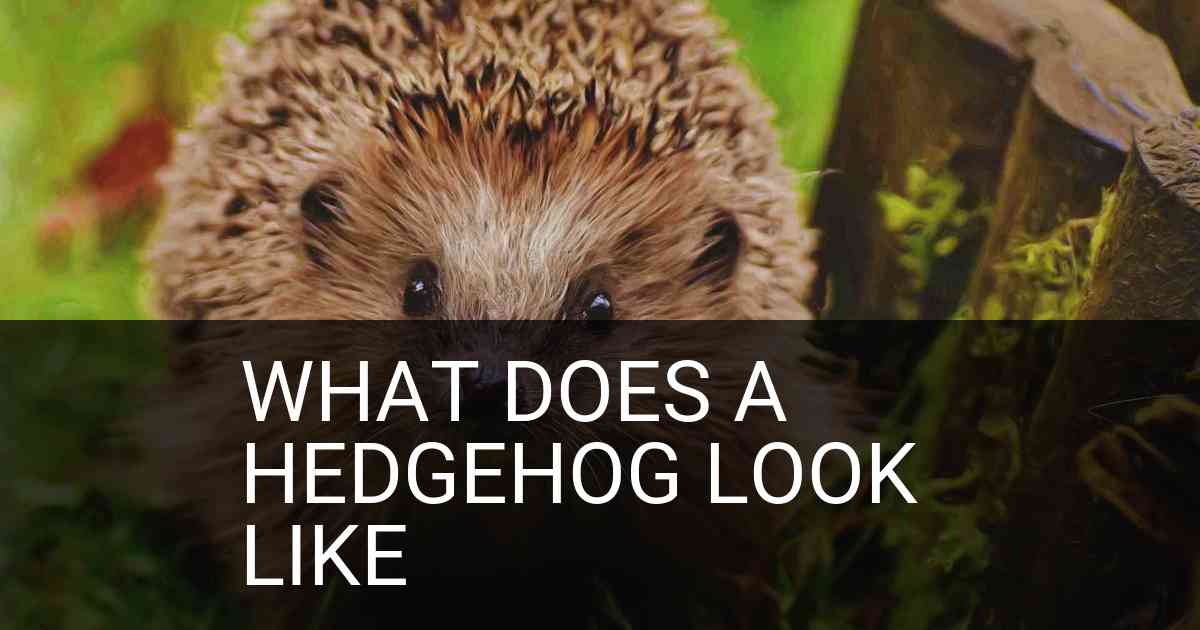
Hedgehogs are fascinating creatures that have been around for thousands of years. They come in a variety of shapes and sizes, but all share the same unique features that make them instantly recognizable.
In this article, we’ll take a closer look at what makes hedgehogs so special and explore the different types of hedgehogs to help you identify them in the wild. We will also discuss their diet, habitat and behavior to give you a better understanding of these incredible animals. So let’s dive into what does a hedgehog look like!
What Does A Hedgehog Look Like?
Hedgehogs are small animals, typically with a body length of 6-8 inches and weighing between 1.5-3 pounds. Their fur is generally grayish, but can also be brown or black in color. They have short legs and feet, long snouts, and large eyes that give them excellent vision at night. Hedgehogs possess a number of unique physical features that make them immediately distinguishable from other animals.
Physical Features:
- Spines: The most distinctive feature of hedgehogs are their spines, which provide protection from predators. These spines are made up of modified hairs that grow to an average length of 2 inches.
- Snout: Hedgehogs have long pointed snouts that they use for sniffing out food and exploring the environment around them.
- Ears: Hedgehogs have round ears located on the sides of their heads which allow them to hear well even in noisy environments.
- Claws: Hedgehog’s claws are sharp and curved allowing them to dig through soil easily when looking for food or shelter.
Five Fascinating Facts About Hedgehogs
Hedgehogs are small, spiny animals found in Europe, Asia and Africa. They might look like a cross between a porcupine and a guinea pig, but they have their own unique characteristics that make them truly fascinating creatures.
- They Are Nocturnal: Hedgehogs are active at night, sleeping during the day. This helps them to avoid predators while they scavenge for food.
- Their Spines Protect Them: A hedgehog’s spines act as protection against potential predators. When threatened, hedgehogs will curl up into a tight ball so that their face is hidden by the sharp spines.
- They Are Omnivores: Hedgehogs eat both plants and animals. Their diet consists of insects, worms, fruits and vegetables.
- They Have Sharp Hearing: Hedgehogs have very keen hearing which helps them to detect potential threats from predators. They also use this sense to locate their prey in the dark.
- They Can Run Fast: In spite of their short legs, hedgehogs can run surprisingly fast! They can reach speeds of up to 6 miles per hour when running away from danger or chasing after food.
The Pros and Cons of Having a Hedgehog as a Pet
Pros:
- Hedgehogs are generally low-maintenance pets.
- They don’t require much space, so they make good apartment pets.
- Unlike some other exotic animals, hedgehogs can live on their own with minimal attention from you.
- Hedgehogs are usually very docile, meaning that they won’t bite or scratch unless provoked.
- Their diet is relatively simple, consisting mostly of insectivore pellets.
Cons:
- Hedgehogs can be quite vocal, making lots of noises at night.
- They’re nocturnal creatures, which means that they’re active during the night and sleep during the day. This can make them difficult to bond with if you work during the day.
- Hedgehogs need specialized care, including a specific temperature range and humidity level in order to stay healthy.
The Spiny Creature: An Overview of the Hedgehog
Hedgehogs are small mammals native to Europe, Asia, and Africa. They belong to the Erinaceidae family of spiny creatures and can be found in a variety of habitats including grasslands, forests, and even urban areas. Although they look cute on the outside with their prickly quills and snouts, they possess an array of remarkable characteristics that make them unique among mammals.
Physical Characteristics
Hedgehogs typically range from 4-8 inches long when fully grown. Their coloration ranges from light browns or tans to black or white depending on species. All hedgehogs have a coat of short stiff hairs known as quills which act as armor against predators. These quills are composed primarily of keratin just like human hair and nails.
Diet & Behavior
Hedgehogs are omnivores meaning that they eat both plants and animals for nutrition. Their diet usually consists of insects such as caterpillars, beetles, grubs, crickets, worms etc., along with fruits and vegetables such as apples, strawberries, carrots etc. In addition to this normal dietary fare hedgehogs also have an appetite for bird eggs.
- Behavior: Hedgehogs are nocturnal animals meaning they sleep during the day and come out at night looking for food. During the winter months however they may hibernate underground in order to conserve energy.
- Mating & Breeding: In the springtime male hedgehog’s search for mates by emitting a special scent known as “pheromones” in order to attract females into their territory. Once mating is complete females will give birth to anywhere from 1-7 young after about 35 days gestation period.
- Conservation Status: Although some species of hedgehog remain relatively common there are several others who find themselves listed on endangered species lists due to habitat destruction caused by humans or other environmental factors such as climate change.
Conclusion
In conclusion, hedgehogs may look small and unassuming, but they are full of personality! From their spiny coats to their adorable little faces, these animals have a unique charm that make them one of the most popular pets around the world. With proper care and handling, they can be great companions for people looking for an unusual pet with lots of character.

